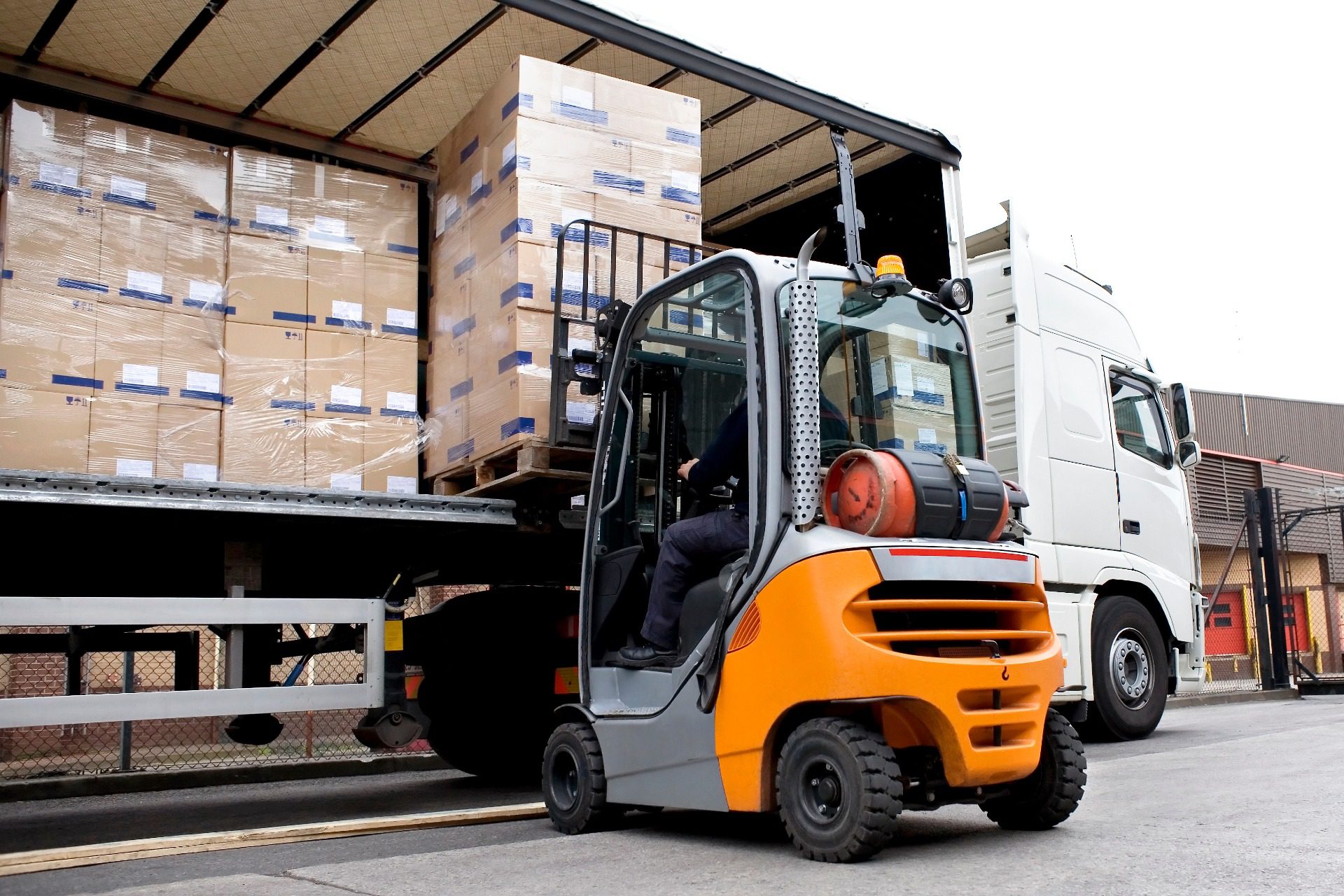A fulfillment center is really just a warehouse that packs and ships products to consumers. Yet despite the two terms being used almost interchangeably, the truth is, warehousing and fulfillment centers mean pretty different things.
True, both use large buildings to store product – but a key difference is that a warehouse stores product or bulk inventory for long periods. A fulfillment center, on the other hand, houses inventory for short periods, just until eCommerce orders need to be shipped to customers.
The distinction is clear, and business owners need to understand the critical differences between the two. In short, fulfillment centers are essential for some eCommerce brands to ensure customer expectations are met efficiently and satisfied.
Read on to learn more about the differences between a fulfillment center vs warehouse.
What is a Fulfillment Center?
Fulfillment centers are a fundamental component in the supply chain. They essentially act as base, or hub, for the logistics that are necessary to get product to customers. A fulfillment center can receive, store, pack, load, and ship products and goods to consumers.
Different types of 3PL providers can offer:
- Fulfillment centers
- Storage warehouses
- Retail distribution centers
- Reverse Logistics
- Cross-docking facilities
Hybrid facilities, like ShipCalm offers, can accommodate a variety of business models from a single facility location.
Fulfillment centers:
- Work to get products into customers’ hands as soon as possible
- Have functionality to handle multiple tasks
- Are most often highly active, with operations running around the clock
- Serve external customers
- Process, pack, and ship orders
- Receive inventory
- Are great for eCommerce brands
- Can help small to mid-sized businesses that are growing and moving away from handling their own shipping needs internally
How Does a Fulfillment Center Work?
A fulfillment center specializes in the storage, packing, and shipping of products for eCommerce businesses. It provides an efficient way to manage inventory and orders while ensuring timely delivery to customers.
Regarding receiving inventory, fulfillment centers typically work with manufacturers or distributors who deliver goods directly to their warehouses. Once items arrive, they’re organized into designated areas or shelves according to product type or size. This makes it easy for employees to locate specific items when needed.
Order processing begins when a customer places an order online. First, the fulfillment center’s system locates the required item or items. Then, it retrieves the product from a designated area before bringing it to a packing station. There, they will carefully inspect items for quality assurance. If any issues arise, there’s time to contact a customer immediately so corrective action can be taken before shipping the product out.
Once all necessary items have been found and checked, they’re safely packed into boxes using appropriate packaging materials like bubble wrap or foam inserts. Labels containing information about each item’s destination are also attached at this stage, before everything’s securely sealed and ready for shipment via courier services like FedEx or UPS.
What is a Warehouse?
Warehouses store products for extended periods, generally much longer than fulfillment centers. Think about needing to store seasonal items or products that aren’t in demand at a particular time of the year. Warehouse staff is trained to deal more with pallets and cases than they are with individual products or items.
Warehouses:
- Store items or product for a long time period
- Have high-stacked shelves, often to the ceiling
- Usually have a static operation, where product is received, stacked, moved to new locations, and stored until needed
- Might work for brands that deal in wholesale or B2Bs that have vast quantities of product
- Can be private or shared
- Might not make sense for small businesses only needing minimal storage spaces
- Generally operate on pallets in/out
What is a Hybrid Fulfillment Warehouse
Hybrid fulfillment warehouses – a solution ShipCalm offers – can be the best of both worlds. These facilities offer long-term storage while having the capabilities of high-paced fulfillment centers. So whether you’re storing product, or you need third-party help pulling, packing, and shipping, hybrid fulfillment is a more flexible and scalable way to go.
Differences Between A Fulfillment Center & Warehouse
There are several differences between fulfillment centers and warehouses, including differences in focus, services provided, and security measures.
Focus
Fulfillment centers are designed to focus on the customer experience. They specialize in order fulfillment, shipping, and returns processing for eCommerce businesses.
On the other hand, warehouses are typically used for storage and inventory management purposes. While warehouses may offer some services related to order fulfillment or shipping, their primary goal is to store products until needed.
Services provided
Fulfillment centers provide a wide range of services to help eCommerce businesses streamline operations and improve customer satisfaction. These services can include order processing, pick-and-pack operations, labeling/packaging solutions, kitting/assembly services, quality control checks, and more.
Warehouses generally don’t offer these types of specialized services but instead focus on providing secure storage space for products until customers or retailers need them. For example, warehouses offer minimal (if any) kitting services. And if they do offer pick/pack/ship fulfillment direct to consumers, the process generally isn’t very efficient in comparison to the capabilities of fulfillment centers.
Security measures
Fulfillment centers often have advanced security measures throughout facilities – like CCTV cameras and motion sensors. It’s also common for them to have access control systems at all entry points, helping ensure that only authorized people can enter the premises.
Warehouses usually have basic security measures like locks on doors. But they may not be equipped with the type of advanced technology that’s found in fulfillment centers. This is in part due to cost considerations or lack of need, since there isn’t much activity within them compared to a fulfillment center where orders are being processed daily.
Cost and efficiency
Fulfillment centers tend to be more expensive than warehouses. They require additional staff members who specialize in order processing tasks like picking items from shelves or packing boxes for shipment. They also usually need extra equipment like conveyor belts or automated sorting machines – all this can add up quickly.
Warehousing is less costly since most activities take place inside one large room with minimal staffing needs.
3PL Fulfillment Center Benefits
Many businesses (particularly eCommerce and high-volume brands) find fulfillment centers advantageous for several reasons:
1. Reduce the need for internal storage
Using a fulfillment center to receive, store, pack, label, and ship product means you don’t need to keep inventory in your physical location (or pay to store it in a warehouse). Instead, your stock is temporarily housed at the exact location it’ll be packed and shipped from.
2. Allow more focus on customer satisfaction
It’s no secret that keeping a customer means keeping them satisfied. It’s then that you can turn a one-time buyer into a lifetime customer and brand advocate. Quick shipping, seamless exchange processes, and quality shipping practices all increase the likelihood of having a happy customer who loves your brand.
3. Protect against market volatility
With the price of fuel wildly (and regularly) swinging so forcefully, transportation and shipping costs can fluctuate too. If you’re managing shipping costs, the result can be an intense hit to your bottom line. By outsourcing to a fulfillment center, you can protect yourself against costly price increases on the actual shipping. Other factors that may fluctuate with market swings include payroll, rent, and utilities. Fulfillment centers can shield you against these rising costs, too.
4. Leave more time for business development (BD) and strategy
Especially for small businesses, who are more likely to handle nearly all aspects of their brands, tackling shipping on your own can be an incredible drain on resources and leave little time for anything else (like growing your brand). That old saying rings true here when you fail to plan, you plan to fail because when time isn’t diligently allocated to growing your business, you’ll likely become stagnant. Outsourcing can free up valuable time to work on business development and strategies that focus on growth.
5. Eliminate the hassle of packing and shipping boxes
One of the best benefits of using fulfillment centers is simply eliminating the time-consuming hassle of packing and shipping. Shipping takes up a lot of time and can pull business owners from more important aspects of running their business. Managing the logistics of all that’s involved in getting product to your customer is not an easy task.
6. Leave time for daily operations rather than shipping logistics
There’s a lot to do when you run a business. Most business owners agree: they need more hours in their day. Everything from responding to customer questions to handling A/R and A/P to ordering more inventory means time and focus. Feeling spread too thin? Handing over the reins and letting someone else deal with the logistics of fulfilling orders can save you valuable time.
7. Increase potential for scalability
For most brands, growing your business means more of everything. More product, more staff, more shipping materials, more time to organize – but you can’t move locations or warehouses every time something else needs “more.” Fulfillment centers scale with you, making the transition seamless each time your brand is ready to take that next step.
8. Get access to state-of-the-art technology
Fulfillment centers invest incredible amounts of time and resources in state-of-the-art industry technology. They utilize the latest and greatest software to allow for shipping, tracking, accounting, and order and inventory management. You get access to that for minimal cost when you work with them.
Fulfillment Center FAQs
Understanding how many square feet you need to handle your shipping logistics may be a key factor in your decision to outsource.
- Look at how many SKUs you offer. Every SKU (or product type) needs its own space (think: 1 T-shirt in 5 different colors in 3 different sizes. That means you need room to store 15 different sets).
- Analyze your monthly volume of orders. Will you ship 200 orders? Or 2,000?
Order processing is what happens after a customer orders a product. eCommerce platforms send order information to whatever fulfillment technology is used, which starts the process. Product is then retrieved from where it’s stored and packed, labeled, and shipped. Finally, tracking information is generated and sent to the customer.
The cost of fulfillment centers can vary, but you should expect to pay a company to receive and store your inventory and then process orders once they come in. More often than not, the time saved by outsourcing this process can allow business owners to focus on generating new leads and customers, which might mean using a fulfillment center actually pays for itself.
Yes, fulfillment centers are designed to manage and store your inventory. They provide a secure environment for storing products until they’re ready to be shipped out. Fulfillment centers use sophisticated software to track the number of items in stock and any incoming or outgoing shipments. This helps ensure stock is on-hand and orders can be fulfilled quickly and accurately.
Most fulfillment centers require you to sign up for an account to use their services. This usually involves filling out paperwork detailing what products you’ll store at the facility, along with payment information. Depending on business size, there may also be minimum purchase requirements or other regulations set forth – these must be met for orders to be fulfilled properly.
A fulfillment center in Amazon is a third-party logistics provider (3PL) that stores, packs, and ships products on behalf of an eCommerce business. This service allows businesses to outsource warehousing and shipping operations while maintaining control of customer experience. By leveraging the scale of Amazon’s infrastructure, brands can benefit from lower costs and faster delivery times for their customers. Fulfillment centers also provide value-added services such as inventory management, returns processing, and order tracking.
Which Solution is Right for You?
To determine if a fulfillment center is the right solution for your business needs, first decide if you need longer-term storage for large quantities of inventory (warehouse) or an all-inclusive inventory management system that can store and quickly process and ship orders (fulfillment center). Determining what you need in place to help you run your business is your first step.
If you’re ready to learn more about how fulfillment centers can take your brand to the next level, reach out to ShipCalm today. Get a custom quote and discover why we’re the preferred 3PL solution for countless brands, helping them grow exponentially with our seamless third-party logistics solutions.



